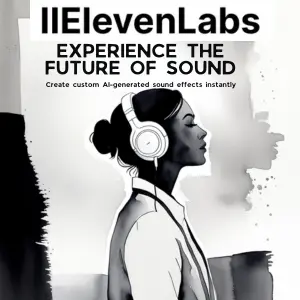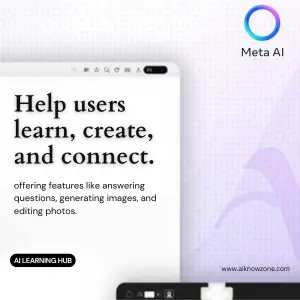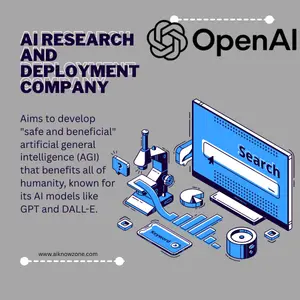
Twinit
Explore the capabilities of Twinit as both a digital twin platform and an AI-driven beauty consultant. Learn how it can personalize user experiences and drive innovation.
Description
Twinit Review: Digital Twins and AI Beauty, All in One?
Alright, buckle up, because we’re diving into the world of Twinit, a platform that’s trying to do a *lot*. From what I’ve gathered, it’s tackling two seemingly different areas: digital twin technology and AI-powered beauty consultations. Yeah, it sounds like a weird mix, but let’s see if it actually works. On the one hand, it’s positioning itself as a composable digital twin platform, meaning you can build, test, and deploy digital twins for various use cases. On the other hand, there’s an AI beauty consultant aspect, promising personalized product recommendations and makeup simulations. It definitely piqued my interest, and I had to investigate to see if it’s a jack-of-all-trades or a master of none. My initial thought was how can these two be related, but after doing research and testing the AI, I was actually pretty surprised at what I found. Let’s jump in and talk about some of the great features of Twinit.
Key Features and Benefits of Twinit
- Composable Digital Twin Platform: This lets you build custom digital twin solutions by composing different services. Think of it like building with LEGOs, but for complex industrial or enterprise applications. You can adapt and scale your solutions as your needs change, without being locked into a rigid system.
- AI-Powered Beauty Consultations: This part focuses on personalized beauty experiences. The AI analyzes your skin characteristics and provides product recommendations, and even lets you virtually try on makeup. This is all about enhancing customer engagement and driving sales in the beauty industry.
- 3D Face Scanning AI: Twinit also features a highly advanced mobile engine for 3D face scanning. This technology analyzes facial shape and color to recommend personalized products.
- Low-Code Orchestration: Twinit offers interoperable platform services with low-code orchestration, making it easier to manage and integrate various components of your digital twin or beauty application.
How It Works (Simplified)
Okay, so how does this Twinit thing actually work? For the digital twin side, you essentially use the platform to connect real-world data sources to a virtual representation. You can then simulate different scenarios, optimize processes, and predict potential issues. The platform offers tools and services to compose applications rapidly using JavaScript and manage their lifecycle easily. As for the beauty side, you upload a photo or use your device’s camera. The AI analyzes your skin tone, facial features, and other characteristics to provide personalized recommendations. You can then virtually “try on” different makeup products and see how they look on you before making a purchase. It is simple, but effective.
Real-World Use Cases for Twinit
- Personalized Beauty Recommendations: Imagine you’re shopping for foundation online. Instead of guessing your shade, you upload a selfie to Twinit. The AI analyzes your skin tone and recommends the perfect match from a specific brand. I’ve used similar tools before, and the accuracy can be impressive.
- Virtual Makeup Try-On: This is a fun one! Before buying a new lipstick, you can use Twinit to see how it looks on you without ever opening the tube. This can help avoid those dreaded “this looked so good in the store” moments.
- Optimize Manufacturing Processes (Digital Twin): A manufacturing company uses Twinit to create a digital twin of their factory. By simulating different production scenarios, they identify bottlenecks and optimize workflows to improve efficiency and reduce costs.
- Smart City Applications (Digital Twin): A city uses Twinit to build a digital twin of its infrastructure. This allows them to monitor traffic patterns, optimize energy consumption, and improve public safety by simulating various scenarios and planning for emergencies.
Pros of Twinit
- Offers both digital twin and AI beauty solutions.
- Composable platform allows for customization.
- AI-powered beauty consultations are personalized and engaging.
- Low-code orchestration simplifies development.
Cons of using Twinit
- The combination of digital twin and beauty solutions might seem disjointed to some users.
- The platform could be complex for users without technical expertise.
- Accuracy of beauty recommendations depends on the quality of the input image.
- Some features may require a subscription or additional costs.
Twinit Pricing
Unfortunately, specific pricing details weren’t readily available in my search results. You’ll likely need to contact Twinit directly or visit their website for detailed pricing information. They seem to offer different plans based on your specific needs and usage, especially for the digital twin platform. I would love to have more information to provide about pricing, but this will have to do for now.
Conclusion
In conclusion, Twinit is an interesting platform that attempts to bridge the gap between digital twin technology and AI-powered beauty solutions. While the combination might seem unusual, it offers unique opportunities for businesses in both sectors. If you’re in the beauty industry and looking to enhance customer engagement with personalized AI consultations, Twinit is definitely worth considering. Likewise, if you’re in manufacturing, urban planning, or any other field that could benefit from digital twin technology, the composable platform could offer a flexible and scalable solution. However, be prepared for a potential learning curve, especially if you’re new to digital twins or low-code development. Overall, I’d say give it a shot if you are curious and in either of those areas, you may be pleasantly surprised like I was.





Reviews
There are no reviews yet.